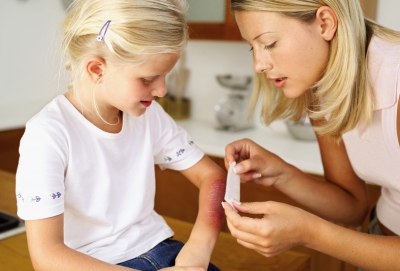Most of the patients presented with foreign body inhalations, some due to allergic oedema and one case had laryngeal cyst causing respiratory tract obstruction.
Broncho-obstructive syndrome is the collective term including a symptom-complex of specificly outlined clinical implications of disturbance of bronchial passableness, having in the basis narrowing or an occlusion of respiratory tracts.
Clinically expressed syndrome of respiratory obstruction often enough meets at children, especially early age.
Occurrence and its development are influenced by various factors and, first of all, a respiratory virus infection contamination.
To number of viruses most often causing an obstructive syndrome carry a respiratory syncytial virus (about 50 %), then a parainfluenza virus, a pneumonia mycoplasma, is rarer - viruses of a flu and an adenovirus. In development of bronchial obstruction the certain role is played by the age features inherent to children of first three years of life. Bronchuses at small children have smaller diameter, than at adults. The narrowness of bronchuses and all respiratory apparatus considerably enlarge aerodynamic resistance. So, the edema mucous bronchuses of all on 1 mm causes rising of resistance to an air flow in a trachea more than on 50 %.
For children of early age the pliability of cartilages of the bronchial tract, an insufficient rigidity of osteal structure of the thorax, freely reacting an indrawing of compliant places on resistance rising in pneumatic pathes, and also features of position and a diaphragm constitution are characteristic.
Considerably burden flow a broncho-obstructive syndrome at children structural features of a bronchial side, such as a considerable quantity of the goblet cells mucifying and raised viscosity of a bronchial secret, bound to high level of sialine acid can.
Doubtless influence on functional disturbances of a respiratory organs at the small child such factors, as longer sleep render also, the frequent crying, primary stay on a back in the first months of life.
The early children's age is characterised by imperfection of immunologic mechanisms: interferon formation in the top respiratory tracts, a serumal immunoglobulin is considerably lowered And, a secretory immunoglobulin And, functional activity of T-system of immunodefence is lowered also. The majority of explorers influence of factors of a premorbidal background on development a broncho-obstructive syndrome admits. These are toxicoses of the pregnant women, the complicated labours, a hypoxia in sorts, a prematurity, the burdened allergological anamnesis, a hyperreactivity of bronchuses, a rachitis, a dystrophia, a thymus hyperplasia, a perinatal encephalopathy, the early artificial feeding, the tolerated respiratory disease at the age of 6-12 months.
Among factors of environment which can lead to development of an obstructive syndrome, especially the great value is given to passive smoking in monogynopaedium. Under the influence of a tobacco smoke there is a hypertrophy of bronchial mucous glands, the mucociliary clearance is broken, slime progression is slowed down. Passive smoking promotes a destruction of an epithelium of bronchuses. The tobacco smoke is an inhibitor of a chemotaxis of neutrophils. At long influence the tobacco smoke influences immune system, reduces activity of T lymphocytes, oppresses synthesis of antibodies of the basic classes, suscitates synthesis of immunoglobulins E, raises activity of a vagus nerve. Especially vulnerable in this plan children of 1st year of life are considered.
Certain influence renders also an alcoholism of parents. It is proved, that alcohol reduces rate of deducing of pathogenic microbes, causes an atony of bronchuses, development of protective inflammatory reaction inhibits.









